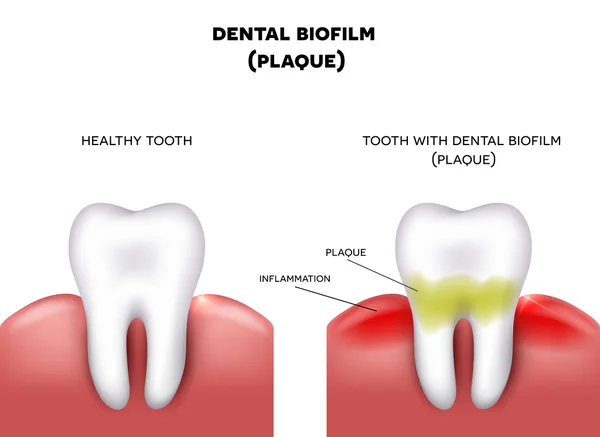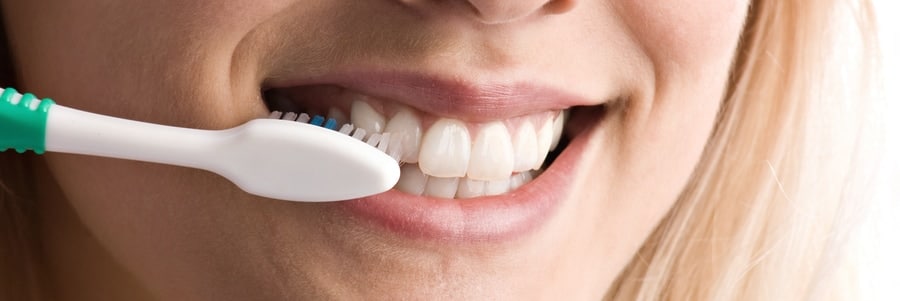What exactly is plaque?
Let’s start by figuring out what a Dental plaque is. Plaque is a sticky coating of germs that accumulates on your teeth on a regular basis. Bacteria in plaque on your teeth creates acids every time you eat or drink. These acids are extremely dangerous, and they can begin to erode and destroy your tooth enamel. Cavities and gum disease (also known as “gingivitis”) might arise as a result of this.
It’s also worth noting that plaque doesn’t just form on your teeth; it may also form behind your gums, where it can harm the roots of your teeth or break down the bones that support your teeth.

Plaque can harden if it is left untreated. When it hardens, it becomes tartare, a material that is exceedingly difficult to remove and cannot be eliminated alone by brushing and flossing. Instead, you’ll have to get it removed by a skilled dentist.
What are the causes of plaque?
So, we’ve established what a plaque is. But what creates it in the first place? Plaque is formed when your mouth’s germs are exposed to sugary or starchy meals. Fruit juices, milk, sugary soft drinks, bread, pasta, fruit, and other items fall into this category. Bacteria in your mouth produce acids, which break down the carbs in various foods and beverages. These bacteria, acids, and carbohydrates can combine to form plaque, a sticky, white film that covers your teeth. Plaque accumulation affects some people more than others. The following variables can make you more likely to acquire plaque:
- consuming an excessive amount of sweet or starchy meals or beverages
- Smoking
- Dry mouth (perhaps caused by drugs such as antidepressants or diseases such as Sjögren’s syndrome)
- Having had radiation to the head or neck in the past
Plaque’s Consequences
Plaque, as we just noted above, can be associated with a variety of health issues. If you don’t brush and floss on a daily basis, plaque and tartare can build up, which can lead to:
- Cavities
- Gingivitis
- Dental Caries
- Gum disease (sometimes known as “periodontal disease”) is a condition that affects the gums.
- Gum disease (sometimes known as “periodontitis”) is a serious infection of the gums.
- Tooth rotting is a common problem.
- Infection of the teeth (such as abscesses)
- Loss of teeth
How Can I Tell If I Have Plaque?

When you have plaque on your teeth, you can usually feel it. When you run your tongue over them, they may feel fuzzy. You may always have a professional inspection from a dentist to see whether you have a significant buildup of plaque or tartare. Your dentist may recommend a dental X-ray to check for cavities if you have a lot of plaque or tartar.
What Is the Best Way to Get Rid of Plaque?
Plaque management is actually rather straightforward. All you have to do is practise proper dental and oral hygiene, which isn’t difficult at all. Brush your teeth twice a day with a good quality fluoride toothpaste to eliminate plaque and prevent tartar buildup. You should also floss between your teeth with dental floss and interdental cleaners to ensure that plaque does not build up between your teeth. For a regular dental checkup, see your dentist at least once a year, but preferably once every six months. They’ll be able to detect any plaque buildup and, if any has formed, take action. If you think things are getting our of control , book a online dental appointment

A scale and polish is usually performed by your dentist to eliminate tartar. This will remove tartar and offer you a new chance to clean and floss your teeth on a regular basis to remove plaque.
Plaque, as you can see, is a quite common and possibly serious condition for the vast majority of us. But, at the same time, it’s so simple to deal with! You should be able to avoid it entirely if you stick to a normal oral hygiene programme. Why take such a risk when you can effectively remove plaque with regular brushing and flossing?

